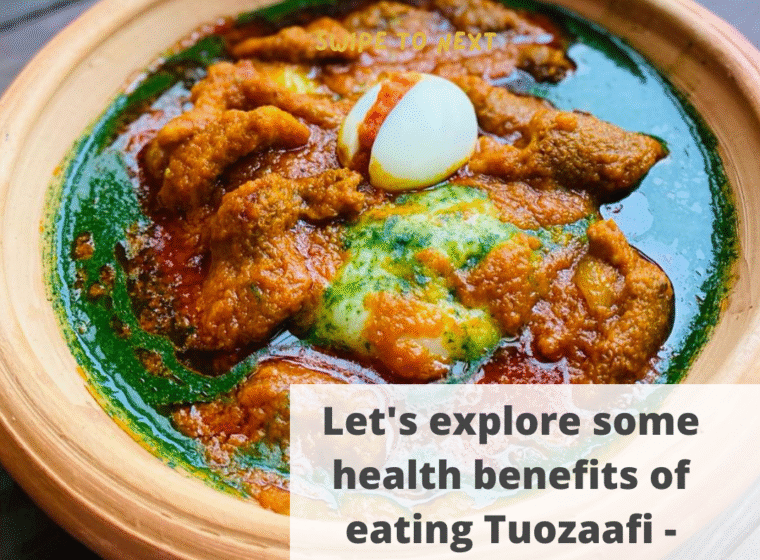Tuo Zaafi: Northern Ghana’s Power Meal
Tuo Zaafi, affectionately called TZ, is more than a northern delicacy — it’s one of Ghana’s most balanced traditional meals. Made from millet, sorghum, or maize flour and served with ayoyo (jute leaf) soup, it delivers plant-based protein, fibre, and minerals that support both strength and heart health.
What Makes Tuo Zaafi So Special
The main ingredient for this meal is either corn or millet. Millet is one of the world’s most nutrient-dense ancient grains. It’s gluten-free, rich in magnesium, phosphorus, and antioxidants, and has a low glycaemic index that helps manage blood sugar levels.
When combined with ayoyo soup and lean protein such as fish or goat, Tuo Zaafi becomes a complete meal, high in fibre, moderate in protein, and low in saturated fat.
Health Benefits Backed by Science
-
Millet-based diets improve lipid metabolism and help manage cholesterol (FAO, 2021).
-
Jute leaves (Corchorus olitorius) have shown strong antioxidant activity and iron content beneficial for anaemia prevention (Abd El-Moneim et al., 2020).
-
Balanced cereal–legume meals, common in African diets, contribute significantly to daily protein and micronutrient intake (Oteng-Gyasi et al., 2022).
How to Eat Tuo Zaafi the Smart Way
-
Choose Whole Corn or Millet or Sorghum Flour: Avoid overly refined versions; they lose fibre.
-
Mind the Portion: One medium bowl (≈ 2 cups) with soup and protein is perfect.
-
Keep Oil Light: A teaspoon of palm or vegetable oil adds flavour without excess calories.
-
Add Variety: Mix ayoyo with garden-egg or okro for texture and extra micronutrients.
-
Hydrate: Corn, and millet’s fibre absorbs water, hence the need to drink enough fluids.
Tuo Zaafi proves that healthy food doesn’t have to be imported or complicated. It’s naturally balanced, nutrient-dense, and proudly Ghanaian.
At 10-10 Foodie, we remind everyone — you can eat local and live well. Our heritage foods are already superfoods; we just need to serve them with wisdom.
References
-
FAO (2021). Millets: Nutritional Profile and Health Benefits. Food and Agriculture Organization of the United Nations.
-
Abd El-Moneim, M. A. et al. (2020). “Nutritional and Functional Properties of Corchorus olitorius Leaves.” Journal of Food Science and Nutrition, 8(3), 155–164.
-
Oteng-Gyasi, E., Boakye-Appiah, J., & Anang, D. (2022). “Traditional Cereal–Legume Dishes and Micronutrient Contributions in Ghanaian Diets.” African Journal of Food Science and Technology, 13(2), 45–52.
By Nana Achiaa Agyapong | Food Scientist & Nutrition Coach

